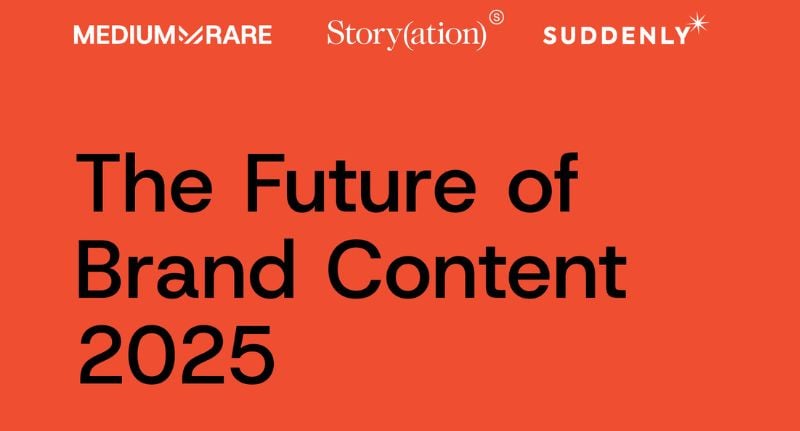Brand content is no longer the supporting act. Instead, it’s now becoming the engine of customer growth, loyalty and conversion, according to new research from News Australia’s content agencies Medium Rare, Suddenly and Storyation.
The Future of Brand Content report, produced with Crowd DNA, shows more than half of Australians now engage with brand content daily – up 11% since 2021 – with 72% going on to purchase after reading or watching it.
For Medium Rare managing director Nick Smith, the shift has been obvious inside client boardrooms.
“When I took over Medium Rare in 2021, clients already valued content, but they saw it as something you got after you shopped – like picking up that Coles magazine at the checkout,” he told Mediaweek.
“What’s changed is brands now need content before, during and after the decision – it’s how they earn clarity, trust and emotional connection.”
Smith said early research confirmed something marketers often underestimated: consumers already know when they’re engaging with branded content from trusted companies. “Back then, consumers were saying, ‘we know this is branded – and we like it when it’s clear and useful.’ That was the turning point.”

Nick Smith
From awareness to advocacy, content now carries the funnel
The study positions content as core business utility, not a campaign layer, with:
• 68% saying it helps product discovery.
• 60% saying it influences final purchase.
• 81% feeling more confident buying after consuming it.
• 77% avoiding customer service thanks to useful content.
Performance media fatigue and search volatility are accelerating the rebalancing, with Smith noting brands “want to own the relationship again, not rent it from an algorithm.”
He added, “In a noisy world, if a consumer loves you, they come back. They’re looking for clarity and humanity, not volume.”
Multi-dimensional brands are winning attention (and affection)
The report points to a shift from single-tone brand voices to multi-dimensional behaviours – content that educates, entertains and empathises.
“Four years ago, content sat in comms,” Smith said.
“Today, CMOs own it because they realise audiences don’t want a one-note brand. Sometimes you need to be serious. Sometimes you should have a laugh about DIY fails on TikTok. That’s how you build a real brand world.”
That versatility is particularly visible in retail.
“Australians love going to Bunnings, to Coles. When those brands give you advice, inspiration, or a laugh – across platforms – it deepens trust. It’s not just ‘buy this’, it’s we’re here with you.”
Trust, AI and the new consumer fluency
Post-pandemic scepticism and the rise of AI-generated content have sharpened scrutiny and made human tone a strategic differentiator.
“Trust in institutions and media was weakening in 2021- and it’s only accelerated,” Smith said. “Consumers are saying, ‘we can critically analyse this – don’t sell to us, tell us.’ Advertising sells. Content explains.”
That clarity expectation, he said, has become a loyalty trigger.
“When you invest in your audience with content that’s genuinely useful and feels human, you build a cohort who backs you when the big paid campaign lands.”
Owning the narrative in a volatile landscape
Smith sees content as a hedge against platform shifts and paid-media turbulence.
“It’s not a volume game,” he said. “It’s value and clarity. Brands who show up like a friend, reliably, helpfully, with personality – are the ones people return to, even when the rest of the internet feels overwhelming.”
Medium Rare CEO Mike Connaghan and Smith will unpack the findings in a webinar on Wednesday 12 November. You can register here.
